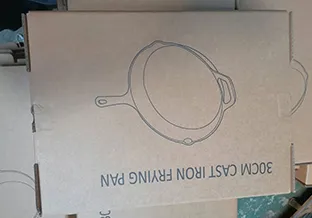
Innovative Cooking Techniques for Your Cast Iron Dutch Oven Masterclass
The Charm of Cast Iron Dutch Ovens
When it comes to versatile cooking tools, few can rival the humble cast iron Dutch oven. A staple in kitchens around the world, this timeless piece of cookware is celebrated for its durability, heat retention, and ability to create unforgettable meals. Whether you’re simmering a hearty stew, baking artisan bread, or slow-cooking a roast, the cast iron Dutch oven is a culinary companion that delivers remarkable results.
The Origins of the Dutch Oven
The concept of the Dutch oven dates back to the 18th century and has its roots in Europe. The name is often attributed to a casting method developed by the Dutch, which involved pouring molten iron into sand molds. This unique technique produced a thick, heavy pot that distributed heat evenly, making it perfect for cooking. The Dutch oven gained popularity in America, particularly among pioneers, who valued its ability to withstand the rigors of outdoor cooking.
Construction and Varieties
Typically made from cast iron, these ovens may come with a variety of finishes, including enameled and bare cast iron. Enameled Dutch ovens feature a colorful, protective coating that prevents rust and eliminates the need for seasoning, while bare cast iron models require a bit more care and attention but offer a natural non-stick surface when seasoned properly.
Inside the oven, the design is often domed, which helps with heat circulation and moisture retention. Some models even come with self-basting lids that allow moisture to drip back into the pot, ensuring your food remains tender and flavorful.
Cooking Techniques
One of the beauties of a cast iron Dutch oven is its versatility. It can be used on the stovetop, in the oven, or even over an open flame, making it an ideal choice for a variety of cooking methods. You can sear meat directly in the pot, add vegetables and liquid, and then transfer it to the oven for slow, even cooking. This one-pot approach simplifies meal preparation and cleanup, making it a favorite among busy cooks.
cast dutch oven

Recipes to Try
For those new to using a Dutch oven, there are countless recipes to explore. A classic beef stew is a fantastic place to start; simply brown the meat, add your chosen vegetables, herbs, and broth, then let it simmer on the stove or move it to the oven. The result is a rich and hearty dish that warms the soul.
Another popular recipe is homemade bread, which can be baked in the Dutch oven to achieve a perfectly crusty exterior and soft, chewy interior. A simple no-knead dough can rise overnight and then be baked in the hot pot for a loaf that rivals those from artisan bakeries.
Care and Maintenance
While cast iron Dutch ovens are incredibly durable, they do require some care to ensure they last a lifetime. After each use, it’s important to clean the pot without abrasive cleaners that can damage the surface. For bare cast iron, a simple scrub with warm water or a gentle brush is usually sufficient. Enameled Dutch ovens can be cleaned with soap and water, ensuring that any food residue is removed.
Additionally, while bare cast iron models benefit from regular seasoning to enhance their non-stick properties, enameled versions do not require this maintenance.
Conclusion
The cast iron Dutch oven symbolizes practicality and tradition in cooking. Its ability to adapt to various styles of cooking while producing excellent results makes it an essential piece of kitchenware. Whether you're an experienced chef or a novice cook, investing in a cast iron Dutch oven is a choice that promises both culinary exploration and delightful meals for years to come.
-
Season Cast Iron Perfectly with GPT-4 Turbo TipsNewsAug.01,2025
-
High Quality Cast Iron Cookware - Baixiang County Zhongda MachineryNewsAug.01,2025
-
Premium Cast Iron Pan: Durable & Perfect HeatNewsAug.01,2025
-
High Quality Kitchen Durable Black Round Cast Iron Cookware Pancake Crepe Pan-Baixiang County Zhongda Machinery Manufacturing Co., Ltd.NewsAug.01,2025
-
Cast Iron Cookware - Baixiang County Zhongda Machinery | Nonstick, Heat ResistanceNewsAug.01,2025
-
High Quality Kitchen Durable Black Round Cast Iron Cookware - Baixiang County Zhongda Machinery | Non-Stick, Heat Retention, DurableNewsJul.31,2025


